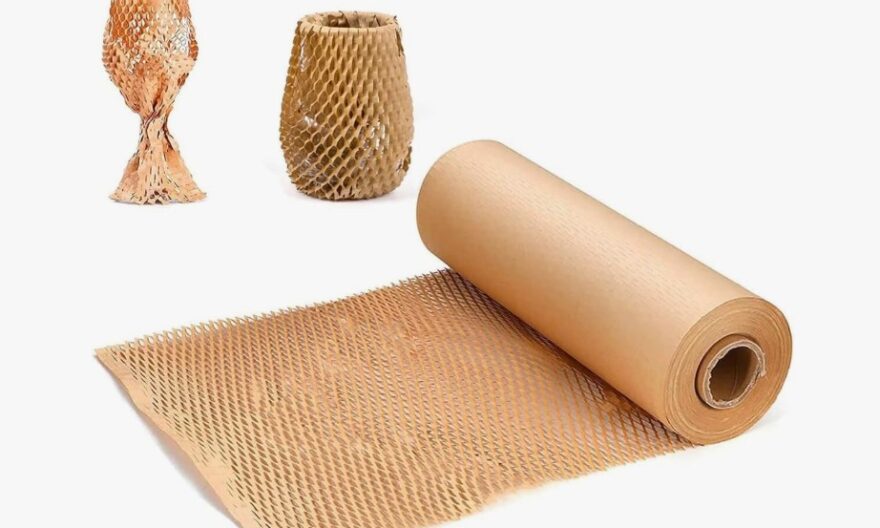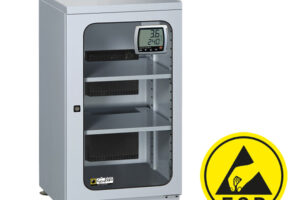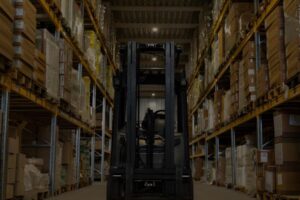
When you pack something breakable, you need to protect it well. Glass, toys, and gadgets can crack or snap if you don’t wrap them right. For a long time, people have picked bubble wrap—that soft plastic with puffy bubbles—to shield their items. But now, many have started to turn to something new: honeycomb paper.
This paper bends, grips, and holds items in place. It comes from kraft paper and opens up like a beehive. Many want to know—can honeycomb paper take the place of bubble wrap? Let’s dig into this question, look at both options and help you pick the one that fits your needs.
What Is Bubble Wrap?
Bubble wrap is a plastic sheet covered in tiny air-filled bumps. These bubbles hold air, soak up shocks, and shield fragile things from breaking. Movers, shop owners, and packers count on it to protect dishes, bottles, toys, and other breakable items during shipping or storage.
People reach for bubble wrap because:
- Bubble wrap hugs delicate items and keeps them safe from drops and shakes.
- It barely adds weight, making packages light.
- It stays clear, so you see what’s inside without unwrapping.
- Bubble wrap bends and twists easily, wrapping around odd shapes with ease.
But bubble wrap has a big problem. It chokes trash bins, fills up landfills, and lingers in nature for years without breaking down. Because of this, more people now search for greener ways to pack.
What Is Honeycomb Paper?
Honeycomb paper starts as a smooth, flat kraft paper sheet. When you gently stretch it, the fibres open into a beehive pattern. This design locks in air soften bumps, and shields items just like bubble wrap—but without leaving plastic waste behind.
People choose honeycomb paper because:
- Honeycomb paper comes from paper, not plastic, making it a kinder choice for the planet.
- It folds up small, so it takes little space when stored.
- Honeycomb paper wraps snugly around curvy and odd-shaped items, keeping them safe.
- It melts back into the earth, leaving no harm behind.
More people are choosing Earth-friendly options. So, honeycomb paper is now a favourite packing material for those who want to reduce waste. Bubble Wrap vs Honeycomb Paper
Bubble Wrap vs Honeycomb Paper
Let’s stack both materials side by side. Which one wraps better? Which one costs more? The table below helps you spot the differences.
Compare Bubble Wrap and Honeycomb Paper
This table shows you how the two wraps act when you use them.
| Feature | Bubble Wrap | Honeycomb Paper |
| How it Cushions | Soaks up shocks with air bubbles | Holds shape well but needs more wrapping |
| Earth-Friendly? | No – hard to recycle | Yes – breaks down in nature |
| Easy to Use? | Yes – just roll and tape | Needs more care to wrap tight |
| How You Store It | Takes up lots of space | Folds flat – saves room |
| Weight | Very light | A bit heavier |
| Cost | Often cheaper | Can cost more |
| How It Looks | Clear and modern | Brown and natural-looking |
When to Use Honeycomb Paper?
Honeycomb paper shines when wrapping handmade gifts, wooden toys, or delicate crafts. It fills empty gaps inside small boxes and hugs soft or lightweight items snugly. For short trips, it keeps things safe without extra bulk. Eco-friendly shops and mindful people choose honeycomb paper. It’s easy to recycle and kind to the planet.
When to Pick Bubble Wrap?
Bubble wrap still rules in some cases, like protecting fragile screens, phones, or heavy breakables. It softens the bumps of long trips and shields sharp-edged items from damage. When shipping things across cities or countries, the air pockets absorb shock in ways honeycomb paper can’t. If old rolls sit in storage, use them up before switching to greener options.
How to Wrap with Honeycomb Paper?
To wrap things right with honeycomb paper, snip a piece big enough for your item. Gently pull until the beehive pattern spreads open, then tuck the item inside and wrap it tightly. Tie it or tape it down so it stays put. For pointy edges or thin spots, layer on extra paper for a better shield. If you’re packing glass or fragile pieces, double-wrap them for extra care.
Bubble Wrap in Singapore
In Singapore, people love clean, neat, and easy-to-use wraps. Shops that sell or move things often turn to bubble wrap Singapore sellers for rolls of all sizes.
Classic Moving Company uses bubble wrap when moving homes or sending things overseas. It holds up well on long trips and feels light. But now, more people in Singapore want greener ways to pack. This shift makes honeycomb paper more popular.
Which One Does What?
Here’s a quick list to assist you in making a selection. This table highlights the advantages and disadvantages of each type of wrap, showing where they excel and where they may not perform as well.
| Wrap Type | Good Things | Not-So-Good Things |
| Bubble Wrap | Cushions well, weighs little, easy to reuse | Bad for the Earth, bulky to store |
| Honeycomb Paper | Earth-friendly, saves space, flexible | Costs more, and takes time to wrap right |
Money and the Environment?
Bubble wrap often costs less. You can buy it in big rolls and use it for many things. But it creates plastic waste. That may cost more in the long run—when you count bins, clean-ups, or brand image.
Honeycomb paper may cost more now but saves in other ways:
- Look eco-friendly to your buyers
- Reduce the amount of waste you send out.
- Use fewer storage shelves
- You can compost what’s left
If you own a shop or brand, this change could attract environmentally conscious customers.
How to Choose the Right Wrap?
Pick bubble wrap if:
- Pack glass or sharp things
- You move items far away
- You already have some in storage
- Need a fast and easy wrap
Pick honeycomb paper if:
- You want to reduce waste
- You pack soft or small items
- Care about the Earth and compost
- You ship light items close by
Some people mix both—use honeycomb on the outside and bubble wrap inside.
Packing Tips for Maximum Protection
Whichever wrap you choose, good technique matters. Follow these tips:
- Wrap items tightly but not too tight
- Cushion corners with extra layers
- Fill box gaps with paper or foam
- Test the box shake—if you hear movement, repack
- Label boxes clearly: “Fragile,” “This Side Up,” etc.
Proper packing can cut damage even if you use lighter wraps.
What’s Next for Wrapping in Singapore?
Many people now think before they pack. They want wraps that protect items but also protect the planet. Shops and homes across Singapore now try:
- Paper tapes
- Cardboard corners
- Compostable packing peanuts
- Honeycomb paper rolls
Bubble wrap still has its place, but honeycomb paper grows fast in use. It blends looks, strength, and eco-care. New styles and thicker paper make it stronger than ever before.
The Final Answer
Honeycomb paper is a good choice for small, light, or eco-friendly gifts. However, it is not the best option for heavy, sharp, or fragile items.
Both wrapping materials protect the items you send or carry, but they serve different purposes. The key is to decide what matters more to you—convenience or caring for the environment.
By selecting the right wrapping material, you can protect your item and help the planet too.
Also Check: Types of Cardboard Boxes in Singapore: Finding the Right Fit for Your Needs
Name: Pack everything
Address: 1 Ubi View, Focus One, #01–05 Singapore Postal Code 408555
Contact: +65 68447616
Google Maps: https://maps.app.goo.gl/YKiCSN4Q9dceZM4o9



